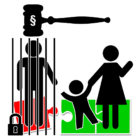
Engaging the Families of Youth in Custody: An Essential Goal for Juvenile Justice Practitioners
|
With a new year upon us, now is the ideal time for juvenile justice practitioners to reflect upon their work and set goals for the months to come.
Juvenile Justice Information Exchange (https://jjie.org/category/ideas-and-opinions/page/28/)

With a new year upon us, now is the ideal time for juvenile justice practitioners to reflect upon their work and set goals for the months to come.

Across the youth justice community, the leadership and expertise of justice-involved youth remains untapped or is utilized in ways that disempower and mirror the exploitative systems that we, as advocates, seek to dismantle.

California has evolved from having one of the most draconian, costly juvenile justice systems to becoming a model of reform.

Restorative justice is a centuries-old approach that seeks to empower people to address the harms, needs and obligations that arise when a crime has been committed by bringing together victims, offenders and members of their respective communities.

Is it possible to educate youth in the adult criminal justice system? As Marshall Project reporter Eli Hager recently observed, “In the U.S., there is adult jail and there is school, and the two rarely go together.”

This year has been one of the most transformative years in history for New York’s juvenile justice system. Just a month after one of New York’s most groundbreaking juvenile justice reforms, Raise the Age, became a reality, New York City took a wrecking ball to the decades-old Spofford Juvenile Detention Centers in the Bronx.

As the holiday season rolls around and many of us are cherishing time with those we love, families separated by incarceration continue to face barriers when trying to maintain a sense of support and connection with their loved ones.

In 2013, the Wyoming Afterschool Alliance (WYAA) became interested in understanding the school-to-prison pipeline based on the alarming statistics that we were seeing in Wyoming and across the nation about incarceration and detention. It was confounding and disturbing to see more and more children and youth entering the system, especially at younger ages. What was going on? And, more importantly — why?

In my last column about Ahmed Hassan, a teenager born in New Jersey who was held in an Egyptian jail for a crime he did not commit, I primarily discussed the problems surrounding reentry after a prolonged jail sentence. Ahmed’s alleged “crime” was being an American citizen.

Commercial sexual exploitation of children (CSEC) has recently received much needed attention, but is by no means a new issue. Researchers have tried to approximate the scope of the problem, but it has proven extremely difficult to produce an accurate estimate of children who are victims of or at risk for CSEC in the U.S. State-level prevalence rates are equally difficult to produce, but a recent report estimated that more than 1,000 U.S.-born minors are sex trafficked in Ohio annually and thousands more are at risk for victimization.